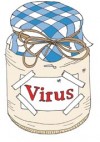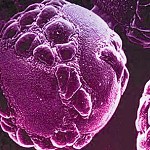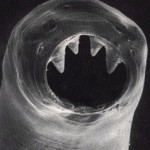 We can learn a lot from the world of parasites, which in general also includes bacteria, viruses and fungi. The medical profession has long focused on bacteria and viruses more-so than parasitic protozoa partly due to the fact of how causes of disease have traditionally been identified. A pathogen had to be shown to be associated with a particular disease. In this respect it had to be isolated, grown in a pure culture, and inoculated into a host which would then produce the disease. The organism in the host also had to be shown to be the pathogen that the host was inoculated with. Bacteria and viruses were easily characterized as disease causing agents within these set of rules, but protozoa, despite their ability to cause severe disease, never really fell easily into this category. Protozoa have an extremely complex process not only in terms of the biological sense but also in terms of survival and the means in which they infect their hosts.
We can learn a lot from the world of parasites, which in general also includes bacteria, viruses and fungi. The medical profession has long focused on bacteria and viruses more-so than parasitic protozoa partly due to the fact of how causes of disease have traditionally been identified. A pathogen had to be shown to be associated with a particular disease. In this respect it had to be isolated, grown in a pure culture, and inoculated into a host which would then produce the disease. The organism in the host also had to be shown to be the pathogen that the host was inoculated with. Bacteria and viruses were easily characterized as disease causing agents within these set of rules, but protozoa, despite their ability to cause severe disease, never really fell easily into this category. Protozoa have an extremely complex process not only in terms of the biological sense but also in terms of survival and the means in which they infect their hosts.
Regardless of the historical context and how parasites may be categorized, I want to focus on the the fact of how these disease causing agents are all good at what they do, and some are so good that we don’t even understand their process or how to mimic their process. Think about the possibility of hijacking a particular parasite’s chemistry so we can alter it’s behavior to actually fight disease instead of causing it.
Take hookworm for example, a parasitic nematode worm that lives in the small intestine of its host and believed to infect 600 million people worldwide. Two species of hookworms that commonly infect humans are Ancylostoma duodenale and Necator americanus. When a hookworm starts eating by tearing up a part of the intestine, the blood starts to clot. In the human body, when a blood vessel is torn, it picks up molecules from cells in neighboring tissue. Some of the new molecules then combine with compounds in the blood. After a series of reactions, special cells known as platelets are activated. The platelets surround the wound and stick together while a mesh of fibers is created around them; this forms a hard clot that stops the bleeding.
A San Diego biotech firm, Corvas International, has tried and failed to develop an anti-clotting medicine derived from the hookworm. Shortly after it also failed in the development of an experimental stroke medication also derived from the hookworm. Corvas International’s failure in no way means the idea is bad, it just means they couldn’t succeed in mimicking the sophistication of the hookworm. Parasites have highly sophisticated processes and one can spend a lifetime just studying one parasite alone.
The example of the hookworm derived medicine gives a brief glimpse of the possibilities of a new class of drugs that are based off the knowledge of the biological processes of sophisticated disease causing agents. As another example, take a look at the research in the field of cancer today. There has been a lot of ongoing research by scientists who are exploring the use of the herpes virus as a possible treatment for cancer. The virus would be engineered to selectively replicate in cancer cells, to trigger an immune response against cancer cells. The herpes virus would replicate and destroy cancer cells and kill the tumor, and patients would not actually contract the herpes virus.
MediGene, a German biotech company, is developing cancer-killing viruses (oncolytic viruses) for the treatment of various types of cancer. The viruses they are focusing on for this endeavor are the herpes simplex viruses, or HSVs, which

HSV 1 Virus
The possibilities of using a parasitic agent to fight disease can have a huge impact on the treatments of many diseases/health issues across the board. Another example is the drug VT-111 which is being developed by a clinical stage

A rabbit sufferring from a Myxoma virus infection




 Twitter
Twitter LinkedIn
LinkedIn Youtube
Youtube RSS
RSS
Pingback: Reovirus may help fight prostate cancer | Science / Technology | Environmental Technology Science Applied
Pingback: frontierville tips
Pingback: respiratory therapy technician
Pingback: acetaminophen side effects children
Pingback: researchers from Lund University
Pingback: herpes
Pingback: mafri.ws
Pingback: self breast exam